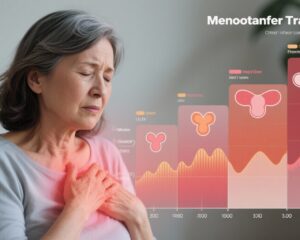Highlight
- Clozapine use in schizophrenia is associated with a 25% increased risk of infections compared with olanzapine.
- Older patients on clozapine exhibit a notably higher infection incidence, emphasizing age-related vulnerability.
- Respiratory and gastrointestinal infections are the primary types contributing to this increased risk.
- Clinical management should balance clozapine’s benefits with infection control and preventive strategies.
Study Background and Disease Burden
Infections represent the leading natural cause of mortality among patients diagnosed with schizophrenia, a condition marked by complex management challenges and significant treatment resistance. Antipsychotics, indispensable agents in schizophrenia care, have been hypothesized to contribute variably to infection risk through immunomodulatory effects and hematologic disturbances, notably neutropenia. Clozapine, a gold-standard agent for treatment-resistant schizophrenia, exhibits unique pharmacological properties but is also linked to complex side effect profiles. Evidence to clarify the relationship between clozapine use and infectious complications remains limited and controversial. This study, leveraging comprehensive electronic health records from the Hong Kong Hospital Authority, aims to elucidate the association between clozapine and infection incidence compared to olanzapine, a chemically similar and commonly prescribed antipsychotic.
Study Design
A retrospective, population-based cohort analysis was conducted using deidentified electronic health records from 2002 to 2023. Inclusion criteria targeted adults (≥18 years) with schizophrenia (ICD-9-CM code 295) who had continuous use of either clozapine or olanzapine for at least 90 days. Patients with prior usage of fewer than two antipsychotics were excluded to enrich the cohort for treatment-resistant cases. Olanzapine served as the comparator due to its similar indications and chemical class.
The primary endpoint was the incidence of any infectious disease identified through a comprehensive range of ICD-9-CM codes. Secondary analyses dissected infection subtypes, including upper and lower respiratory tract infections and gastrointestinal infections. Propensity score-based inverse probability of treatment weighting (IPTW) was applied to balance covariates such as age, sex, and comorbidities. Weighted hazard ratios (HRs) and absolute incidence differences were estimated using Cox proportional hazards models.
Key Findings
From 53,092 patients with clozapine or olanzapine initiation between January 1, 2004 and December 31, 2023, a final cohort of 11,051 patients met inclusion criteria (1,450 clozapine users; 9,601 olanzapine users). The clozapine group was younger on average (mean age 40.59 years) compared to the olanzapine group (45.33 years). Gender distribution was balanced overall, with 54.6% female.
The study found a statistically significant increase in infection incidence in clozapine users versus olanzapine users. The weighted incidence rate was 7.26 per 100 person-years for clozapine users compared to 6.00 for olanzapine users, resulting in a weighted hazard ratio (HR) of 1.25 (95% CI 1.13–1.39). The weighted absolute difference was 1.27 infections per 100 person-years (95% CI 0.55–2.04).
Subgroup analyses revealed that the infection risk with clozapine increased with patient age. Weighted HRs for infections rose from 1.24 in patients aged 18–44 to 1.45 in those aged 55 or older, with corresponding absolute incidence differences progressively larger, indicating an age-dependent augmentation of risk.
Respiratory tract infections (both upper and lower) and gastrointestinal infections were identified as the primary drivers of the overall increased infection burden observed in clozapine users.
Expert Commentary
This large-scale, real-world cohort study provides robust evidence supporting an association between clozapine use and heightened infection risk in schizophrenia, particularly respiratory and gastrointestinal infections. The findings align with known hematological side effects of clozapine, including neutropenia, which compromise immune defense mechanisms. The observed gradation of risk with age highlights the importance of heightened clinical vigilance in older patients.
While olanzapine serves as a sound comparator due to overlapping therapeutic indications and pharmacologic profiles, residual confounding by unmeasured factors such as lifestyle or socioeconomic variables cannot be excluded. Additionally, ethnicity data absence limits exploration of ethnic-specific risk profiles.
Clinically, these data underscore the necessity of integrated care approaches including routine infection screening, vigilant hematological monitoring, patient education on infection prevention, and appropriate vaccination strategies for patients prescribed clozapine.
Conclusion
Clozapine, though critical for treatment-resistant schizophrenia, is associated with a significantly increased risk of infections relative to olanzapine, particularly pronounced in older populations. These findings advocate for balanced clinical decision-making, weighing clozapine’s unmatched therapeutic benefits against its infection risk profile. Proactive infection control measures and personalized monitoring regimes are paramount to optimizing outcomes in this vulnerable population.
References
Hu Y, Tian W, Wei C, Sun Q, Song S, Zhou L, Chu RYK, Liu W, Liu B, Ng APP, Lee KCK, Lo HKY, Chang WC, Wong WCW, Chan EWY, Wong ICK, Lai FTT. Clozapine use and risk of infections in patients with schizophrenia in Hong Kong: a population-based cohort study. Lancet Psychiatry. 2025 Sep;12(9):628-637. doi: 10.1016/S2215-0366(25)00201-9. Epub 2025 Jul 28. PMID: 40744048.



